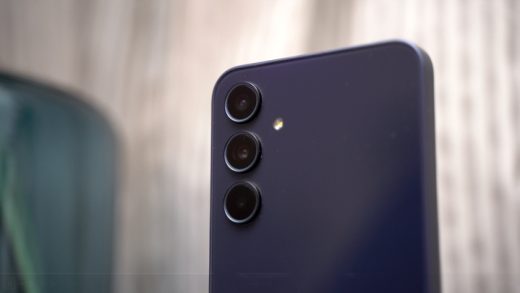Samsung has officially unveiled their latest flagship smartphone – the Galaxy S8. It introduces a number of improvements over its predecessor from its design, display, and even internal specifications. Let’s a take a quick look what has changed with the Samsung’s flagship smartphone.
READ: Samsung Galaxy S8 Review

Samsung Galaxy S8 | Samsung Galaxy S7 |
|---|---|
Display | |
The key feature of the Galaxy S8 is its display. It’s now called Infinity Display that virtually occupies the whole front of the device. It has an enlarged 5.8-inch Super AMOLED display with curved edge just like with the Galaxy Note 7. It has new ultra-wide 18.5:9 aspect ratios with a 2960 x 1440 native resolution or WQHD+. Despite the increase in display size, the phone’s overall dimensions are about the same of its predecessor. | The Galaxy S7 has a slightly pocketable 5.1-inch display. It was also a Super AMOLED panel sans the curved edge which was only available to the Galaxy S7 Edge. Its resolution is 1440 x 2560 pixels or QHD which is about the same with the Galaxy S8, just slightly shorter. |
Processor and Storage | |
The S8+ uses its own processor, specifically the Exynos 8895 octa-core processor (4 ARM Cortex A53 1.7GHz + 4 Exynos M1 2.3GHz). This is partnered to a Mali G71MP20 GPU, 4GB RAM, and 64GB of storage which can be expanded via microSD. | The Galaxy S7 uses the Exynos 8890 Octa processor from last year. That's paired to an Mali-T880 MP12, 4GB RAM, and 32GB storage which is smaller compared to the Galaxy S8 but you can also expand it via microSD. |
Camera | |
Since the Galaxy S7’s camera was already an impressive one with its Dual Pixel technology, Samsung opted to use it again. Still with 12-megapixels, f/1.7 aperture, and optical image stabilization. The front-facing camera though is now upgraded to 8-megapixel sensor with autofocus and f/1.7 aperture. | The Samsung Galaxy S7 from last year packs one of the most impressive cameras in a smartphone to date. That said, Samsung has decided to use it again on the S8 and S8+. We're talking about a 12MP Dual Pixel sensor and f/1.7 aperture. The front camera is handled by an 5MP camera with f/1.7 aperture. |
Sensors and Features | |
The Galaxy S8 with a slew of sensors and that includes the Iris scanner that debuted on the Galaxy Note 7. In addition, there's a fingerprint scanner which is now relocated at the back, hear-rate sensor, fingerprint reader, USB-C, and NFC. Aside from the sensors, the Galaxy S8 retains its IP68-rating meaning it can take on water and dust. | The Galaxy S7 sports the basics of a 2016 phone – fingerprint scanner, NFC, heart-rate sensor, and the good old micro-USB port. It also features the same IP68-rating without the added bulk of other rugged handsets. |
Battery | |
Since the Galaxy S8 sports about the same dimension with the Galaxy S7, its battery capacity remained the same at 3000mAh. Of course, it supports Samsung’s adaptive fast charging as well as wireless charging. Samsung has implemented their 8-point battery check for the Galaxy S8, too. | The Galaxy S7 has a 3000mAh battery inside its glass body. It supports adaptive fast charging by Samsung and also wireless charging. |
Software | |
The Galaxy S8 runs Android Nougat out of the box topped with their skin called Samsung Experience. Also, it features its own virtual assistant called Samsung Bixby and supports the new Samsung Dex accessory to convert it into a desktop-style experience. | When the Samsung Galaxy S7 was released, it has Android Marshmallow out of the box. Since it’s a flagship phone, Samsung has pushed the Nougat update already to some with a complete global rollout soon. |
























